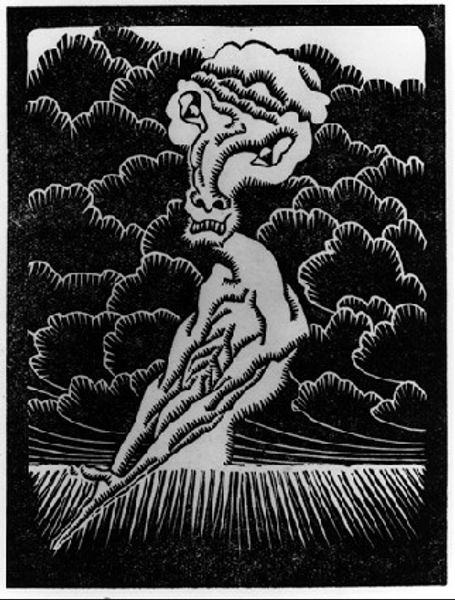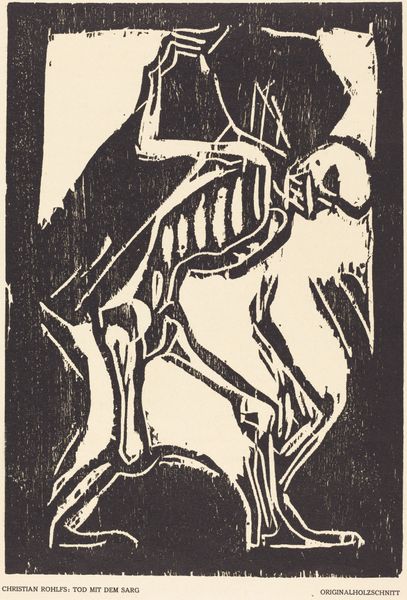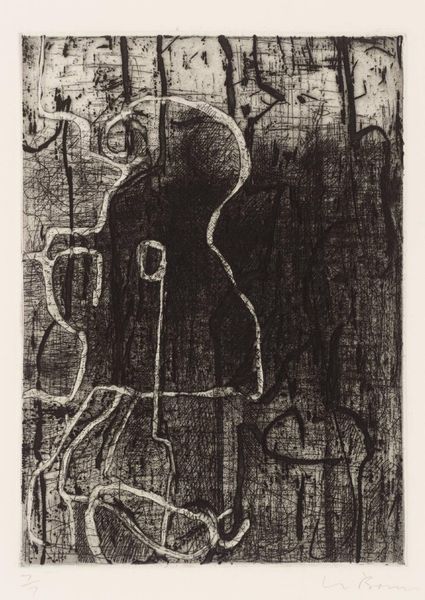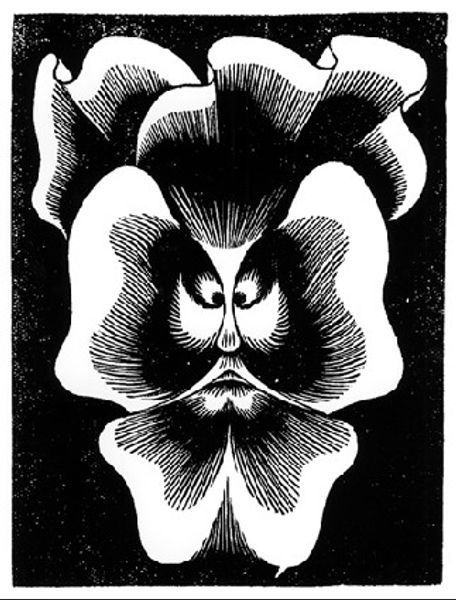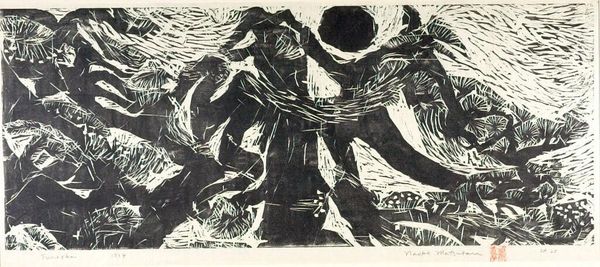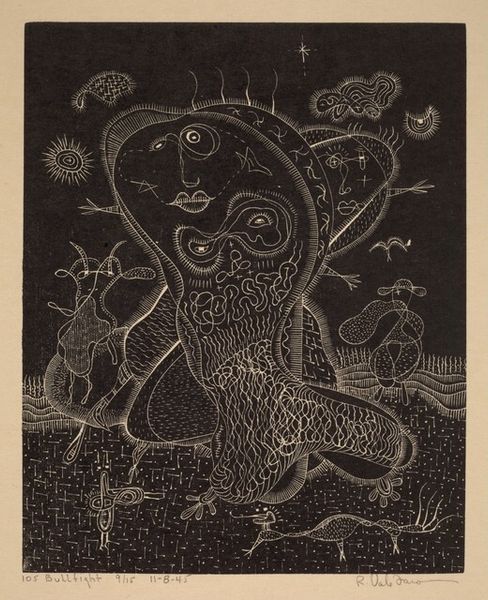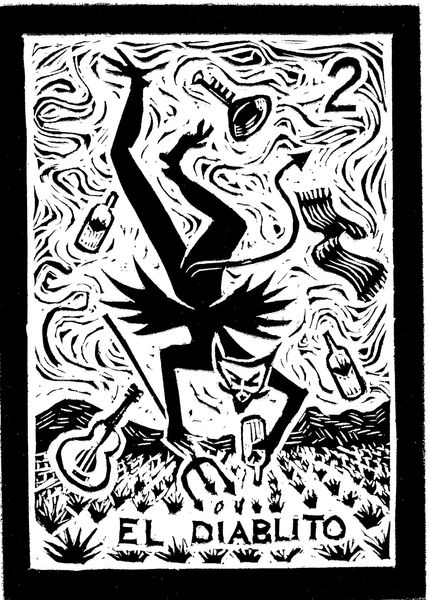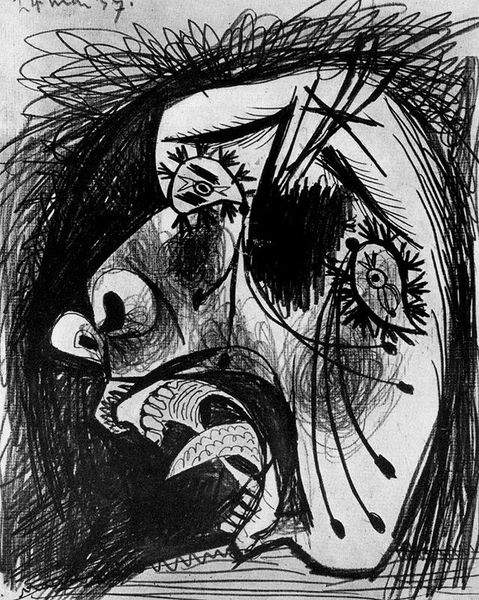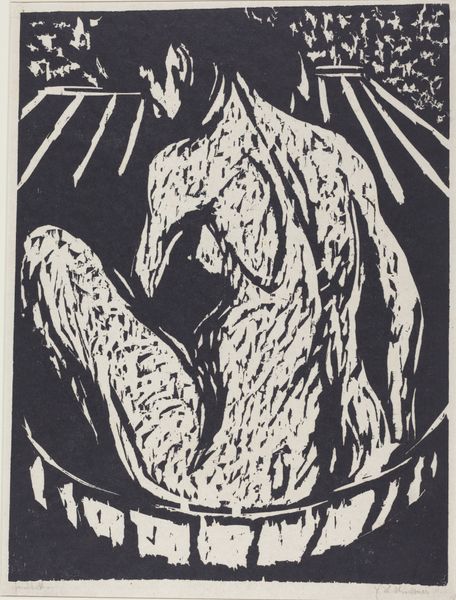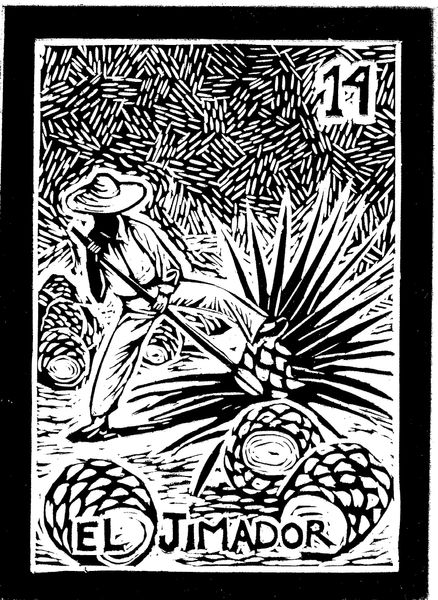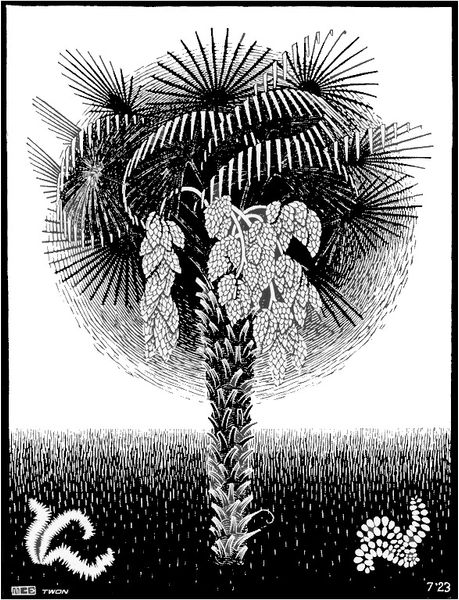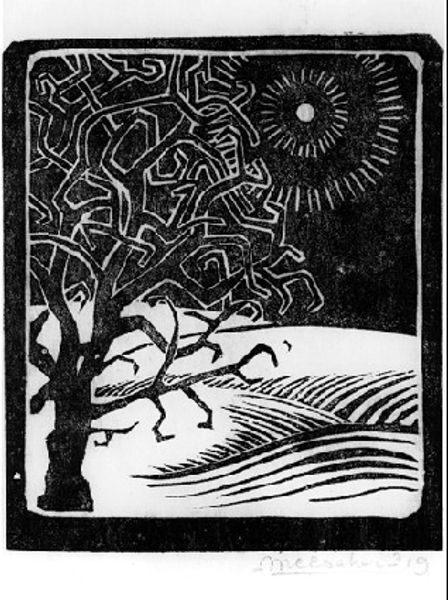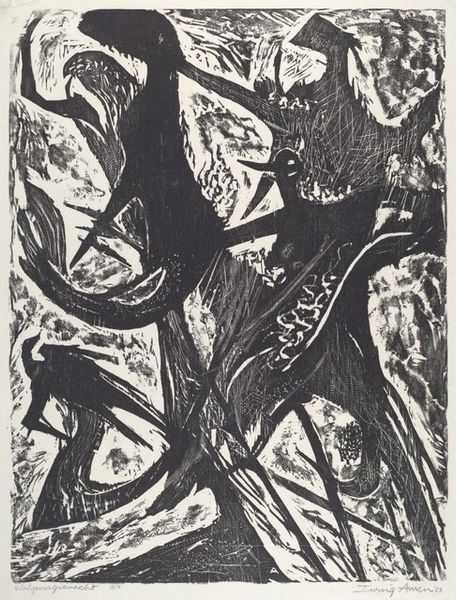
print, woodcut
#
tree
#
quirky illustration
# print
#
pen illustration
#
ink line art
#
forest
#
geometric
#
woodcut
#
line
#
symbolism
Copyright: Public domain US
Curator: Ah, M.C. Escher’s "Twon Tree," created in 1919. It’s a woodcut print— stark contrasts in black and white, typical of his early period. What catches your eye first? Editor: The energy. There’s this madcap figure in the lower right fleeing something under this swirling, cosmic, but somehow deeply Celtic tree. It's an anxiety dream in a forest. Curator: Fleeing what, indeed? Trees in art have long served as potent symbols of life, growth, interconnectedness. Escher, in his youth, played with that trope, interweaving pagan symbolism, such as the ancient concept of sacred groves. What meanings do you see intertwined here? Editor: It's almost aggressively symbolic, isn't it? Those intertwining branches… they could be roots. Above them the eclipse suggests hidden, perhaps threatening knowledge. It hints at chaos but with this geometric discipline underneath trying to tame the chaos into a digestible narrative. Failed though, since my narrative goes nowhere, haha. Curator: It's tempting to over-intellectualize Escher sometimes! But you've spotted an important tension, that push and pull. Consider the era, just after World War One, there was immense psychological fallout to process, a turning to simpler beliefs of the past even though these traditions had failed as well. His imagery is tapping into that feeling directly. Editor: I can feel it, it gives me a little bit of vertigo. I'm definitely that stick figure at the bottom scrambling across the plains in a fever. Maybe there’s a dark fairytale lurking here… a journey, or an escape from a collapsing worldview. And woodcut! You really feel his physical act in creation, that deliberate cutting of wood away, and what is left. It mirrors an experience in this illustration. What is left when something gets cut away? What story can exist here? Curator: Absolutely. Woodcut forces choices— clarity born from subtraction, a stripping-back. That figure, by the way, can't be pinned down too closely. The universal plight to define meaning against daunting backdrops that appear meaningless until something breaks inside us to see an altered perspective on the way we understand things as people and their symbols for meaning and story-telling is powerful even still today. Editor: So well-put, you pulled me from running back into your intellectual safety, where I can feel more secure, haha! Curator: Well, maybe that's where Escher wanted to put you as a person experiencing this image—to exist in both places. One feels safe while the other pushes us closer towards what we truly are: not defined but in-becoming through our understanding. A dichotomy the piece is well structured and positioned to invite from those in the foreground running for the understanding. Editor: The race continues.
Comments
No comments
Be the first to comment and join the conversation on the ultimate creative platform.
